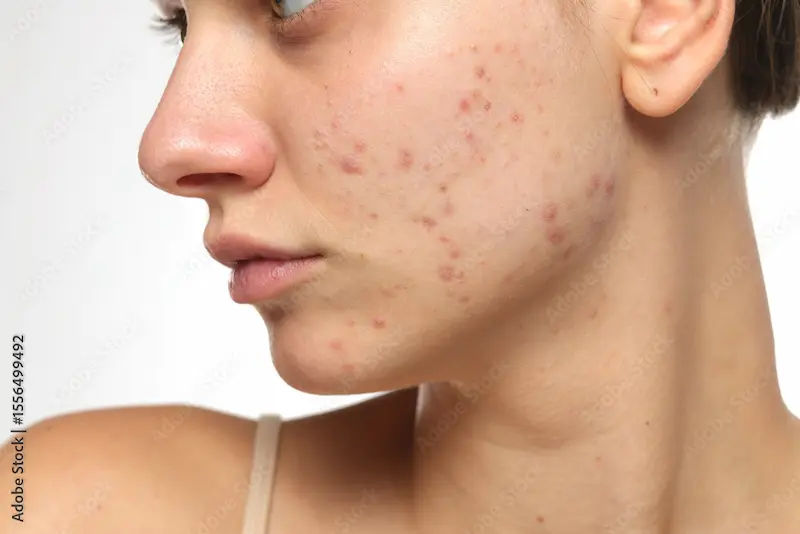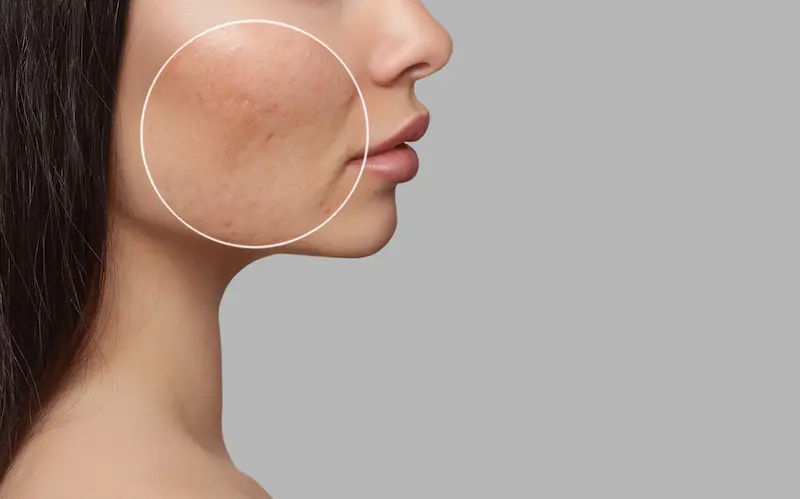Holi Skin and Hair Care: Your Essential Guide
Protect your skin and hair this Holi with essential care tips to enjoy the festival safely while keeping them healthy and vibrant.


Introduction
The festival of Holi is a vibrant explosion of joy, colour, and celebration. However, the very thing that makes it so beautiful, the colours can often be harsh on our skin and hair. Modern Holi colours, especially the synthetic ones, can contain heavy metals, chemicals, and allergens that lead to dryness, irritation, and even long-term damage. But does this mean you should shy away from the fun? Absolutely not! With a little preparation and the right care strategy, you can enjoy a riot of colours without compromising your skin and hair health. This comprehensive guide will walk you through a complete before, during, and after Holi care plan. We’ll cover everything from pre-festival preparation with oils and moisturisers to gentle yet effective post-Holi cleansing techniques and remedies for common reactions. Let’s ensure your Holi is remembered for its happiness, not its hassles.
Why Holi Colours Can Be Harmful to Your Skin and Hair
Understanding what you're dealing with is the first step to effective protection. The bright pinks, gleaming greens, and deep blues that make Holi so photogenic are often achieved with industrial-grade chemicals not meant for human skin.
The Problem with Chemical-Based Colours
Traditional, natural colours made from flowers and herbs have largely been replaced by cheaper, synthetic alternatives. These can contain substances like:
- Lead Oxide (Black): Can cause skin allergies and renal failure.
- Chromium Iodide (Purple): Can lead to bronchial asthma and allergies.
- Copper Sulphate (Green): Can cause eye allergies and temporary blindness.
- Mercury Sulphite (Red): A known toxin that can cause skin cancer and dermatitis.
These chemicals strip the skin and hair of their natural oils, leading to the common problems we associate with post-Holi care.
Common Skin Reactions from Holi Colours
Exposure to these chemicals can cause a range of skin issues, from mild to severe:
- Dryness and Itching: The most common reaction as colours sap moisture.
- Rashes and Allergic Dermatitis: Red, inflamed, and itchy patches.
- Abrasion and Burns: Some colours have a gritty texture or alkaline pH, causing physical scratches or chemical burns.
- Acne Breakouts: Clogged pores from oily colours can lead to pimples and blackheads.
Potential Hair Damage from Harsh Colours
Your hair is equally vulnerable. The chemicals can:
- Cause Extreme Dryness and Frizz: Making hair brittle and unmanageable.
- Lead to Scalp Infections: Itchy, flaky scalp due to irritation.
- Result in Hair Breakage and Fall: Weakened hair shafts snap easily.
- Alter Hair Colour: Stubborn colours can leave an unwanted tint, especially on light-coloured hair.
Consult a Dermatologist for the best advice
Pre-Holi Care: Your Essential Preparation Ritual
The best defense is a good offense. Spending 20-30 minutes on pre-Holi preparation can significantly reduce the impact of the colours.
Skin Preparation: Creating a Protective Barrier
Your goal is to create a layer between your skin and the colour. A well-moisturised skin is less likely to absorb colours deeply.
For Oily and Acne-Prone Skin
Start with a gentle cleanser. Then, apply a water-based, non-comedogenic moisturiser. Follow this with a generous layer of sunscreen. Finally, seal it all with a thick cream like coconut oil or cold cream, focusing on areas like elbows, knees, and neck. The oil creates a barrier that prevents colour penetration without clogging pores excessively when washed off properly later.
For Dry and Sensitive Skin
If you have dry or sensitive skin, your skin needs extra TLC. Use a rich, creamy moisturiser. Layer a heavy oil like almond or olive oil all over your body and face. This dual moisturising provides a strong shield against the drying effects of the colours, which is a crucial part of Holi care for dry skin.
Hair Preparation: The Power of Oiling
This is non-negotiable. A thorough oiling is the most effective pre Holi hair care step.
Best Oils for Different Hair Types
- For Normal to Dry Hair: Coconut oil is excellent as it penetrates the hair shaft.
- For Oily Hair: Lightweight oils like jojoba or almond oil are preferable.
- For Overall Health: A blend of coconut and almond oil works wonders.
Massage the oil deeply into your scalp and work it through the lengths of your hair. Leave it on for at least an hour, or ideally overnight, before washing. For extra protection, tie your hair up in a bun or braid and cover it with a cap or scarf.
During Holi: Smart Practices for Real-Time Protection
What you do while playing Holi is just as important as the preparation.
Clothing Choices: Your First Line of Defense
Wear full-sleeved shirts, trousers, or long maxi dresses made from thick cotton. Cotton is comfortable and provides a good physical barrier. Avoid synthetic fabrics like nylon, which can react with heat and colour, causing more irritation.
Facial Protection: Don’t Forget the Sunscreen!
Reapply a broad-spectrum sunscreen with an SPF of 30 or higher every two hours if you are in the sun. This protects your skin from UV rays, which can be more damaging when combined with colour chemicals. Wear sunglasses to protect your eyes and a hat or scarf for your hairline.
Post-Holi Care: The Ultimate Cleansing and Recovery Guide
The temptation is to scrub the colour off aggressively; resist it! Gentle cleansing is key to removing Holi colour without damage.
How to Remove Colour from Your Skin Gently
After the fun of playing with colours, taking them off without harming your skin is just as important.
Step-by-Step Face Cleansing Routine
1. Dry Removal: Use a soft tissue or cotton pad to gently wipe off excess dry colour.
2. Oil-Based Cleanser: Massage a gentle oil (like coconut or olive) or a commercial cleansing balm onto your dry face. This dissolves the colour. Wipe off with a damp cloth.
3. Gentle Face Wash: Use a sulfate-free, creamy face wash to remove the oil residue. Avoid scrubs for the first wash.
4. Soothing Mask: Apply a calming mask made of sandalwood powder, multani mitti (Fuller’s Earth), or aloe vera gel to cool the skin.
5. Moisturise: Finish with a hydrating moisturiser to restore the skin barrier.
Body Wash Do’s and Don’ts
- DO: Use a mild, moisturising body wash or gram flour (besan) mixed with milk or yoghurt.
- DON’T: Use harsh soaps, loofahs, or pumice stones. They will cause abrasions.
Reviving Your Hair: A Post-Holi Hair Wash Ritual
Holi colours can leave your hair dry and damaged, but the right wash routine can bring back its shine and strength.
Pre-Shampoo Treatment for Stubborn Colour
Before wetting your hair, apply a mixture of curd and lemon juice or a deep conditioning mask to dry hair. Leave it on for 20-30 minutes. The lactic acid in curd helps loosen the colour gently.
Soothing Shampoo and Conditioner Tips
Wet your hair thoroughly. Use a mild, clarifying shampoo but don’t shampoo aggressively. Lather gently and rinse. Follow with a deep conditioner or hair mask, focusing on the ends. This post Holi hair care routine is vital for restoring moisture. Avoid using a hairdryer; let your hair air dry.
Quick Action Guide for Skin and Hair Reactions
If you experience a reaction:
- For Rashes/Itching: Apply a paste of sandalwood powder and rose water or calamine lotion. If the
- itching is severe or the rash spreads, it's best to consult a dermatologist online with Apollo24|7 for prompt advice.
- For Burns: Immediately rinse with cool water and apply aloe vera gel. Avoid any other products.
- For Dry, Stretched Skin: A honey and oatmeal scrub can gently exfoliate and moisturise.
- For Eye Irritation: Rinse eyes with cool, clean water repeatedly. If irritation persists, seek medical attention.
DIY Natural Colour Removal and Soothing Remedies
- For Skin: A paste of gram flour (besan), turmeric, and milk or rose water is excellent for cleansing and brightening.
- For Hair: A mask of mashed banana and honey can deeply condition and help remove colour particles.
- For Soothing: Aloe vera gel straight from the plant is the best remedy to cool any inflammation or redness.
Conclusion
Holi is a festival to be enjoyed with abandon, and with the right skin and hair care plan, you can do just that without worry. The mantra is simple: protect beforehand, be mindful during, and nurture afterwards. By investing a little time in pre- and post-festival care, you ensure that the only thing that lingers after Holi is the joy and camaraderie, not the discomfort of damaged skin and hair. So, go ahead, play safe, and immerse yourself in the true spirit of the festival. Have a happy, colourful, and safe Holi!
Consult a Dermatologist for the best advice
Consult a Dermatologist for the best advice

Dr. Yogesh H R
Dermatologist
21 Years • MBBS, MD
Bengaluru
Apollo Hospitals Jayanagar, Bengaluru
Dr B Kinnera
Dermatologist
8 Years • MBBS, MD DVL , FRGUHS (Dermatosurgery and hair transplantation )
Visakhapatnam
Apollo Hospitals Ramnagar Vizag, Visakhapatnam
Dr. Dinesh Raj R
Dermatologist
10 Years • MBBS., M.D.D.V.L
Chennai
Apollo Medical Centre, Annanagar, Chennai

Dr. Surabhi Sharma
Dermatologist
7 Years • MBBS, MD(D.V.L) Dermatology
Kolkata
Apollo Multispeciality Hospitals , Kolkata, Kolkata
(25+ Patients)

Dr. K Surya
Dermatologist
7 Years • MBBS, MD (DVL)
Nellore
Apollo Speciality Hospitals, Nellore
(50+ Patients)
Consult a Dermatologist for the best advice

Dr. Yogesh H R
Dermatologist
21 Years • MBBS, MD
Bengaluru
Apollo Hospitals Jayanagar, Bengaluru
Dr B Kinnera
Dermatologist
8 Years • MBBS, MD DVL , FRGUHS (Dermatosurgery and hair transplantation )
Visakhapatnam
Apollo Hospitals Ramnagar Vizag, Visakhapatnam
Dr. Dinesh Raj R
Dermatologist
10 Years • MBBS., M.D.D.V.L
Chennai
Apollo Medical Centre, Annanagar, Chennai

Dr. Surabhi Sharma
Dermatologist
7 Years • MBBS, MD(D.V.L) Dermatology
Kolkata
Apollo Multispeciality Hospitals , Kolkata, Kolkata
(25+ Patients)

Dr. K Surya
Dermatologist
7 Years • MBBS, MD (DVL)
Nellore
Apollo Speciality Hospitals, Nellore
(50+ Patients)
More articles from Skin Care
Frequently Asked Questions
What is the best oil to apply on hair before Holi?
Coconut oil is generally the best as it penetrates the hair shaft deeply, creating a strong protective barrier against chemical colours. For those with fine hair, lighter oils like almond oil are a good alternative.
How can I remove stubborn Holi colour from my face without damaging my skin?
Start with an oil massage. Use coconut or olive oil on dry skin to dissolve the colour, then wipe it off. Follow up with a gentle, sulfate-free cleanser. Avoid using soap or harsh scrubs on the first wash.
I have sensitive skin. What are specific tips for safe Holi care for me?
Do a patch test with the colour a day before. Before playing, apply a thick layer of a hypoallergenic cream or petroleum jelly as a barrier. Wear full coverage clothing and try to use only natural, organic colours.
My skin feels burnt and stretched after Holi. What should I do?
This is a sign of extreme dryness and chemical exposure. Immediately apply pure aloe vera gel or a calming sandalwood paste. Avoid hot water and soap. If the burning sensation persists, consulting a dermatologist via Apollo24|7 can help you get a tailored treatment plan.
Are there any quick DIY remedies for post-Holi hair care?
Yes, a pre-shampoo treatment with curd (dahi) is very effective. Apply it to dry hair, leave it on for 30 minutes, and then wash with a mild shampoo. It helps loosen the colour and condition the hair.




